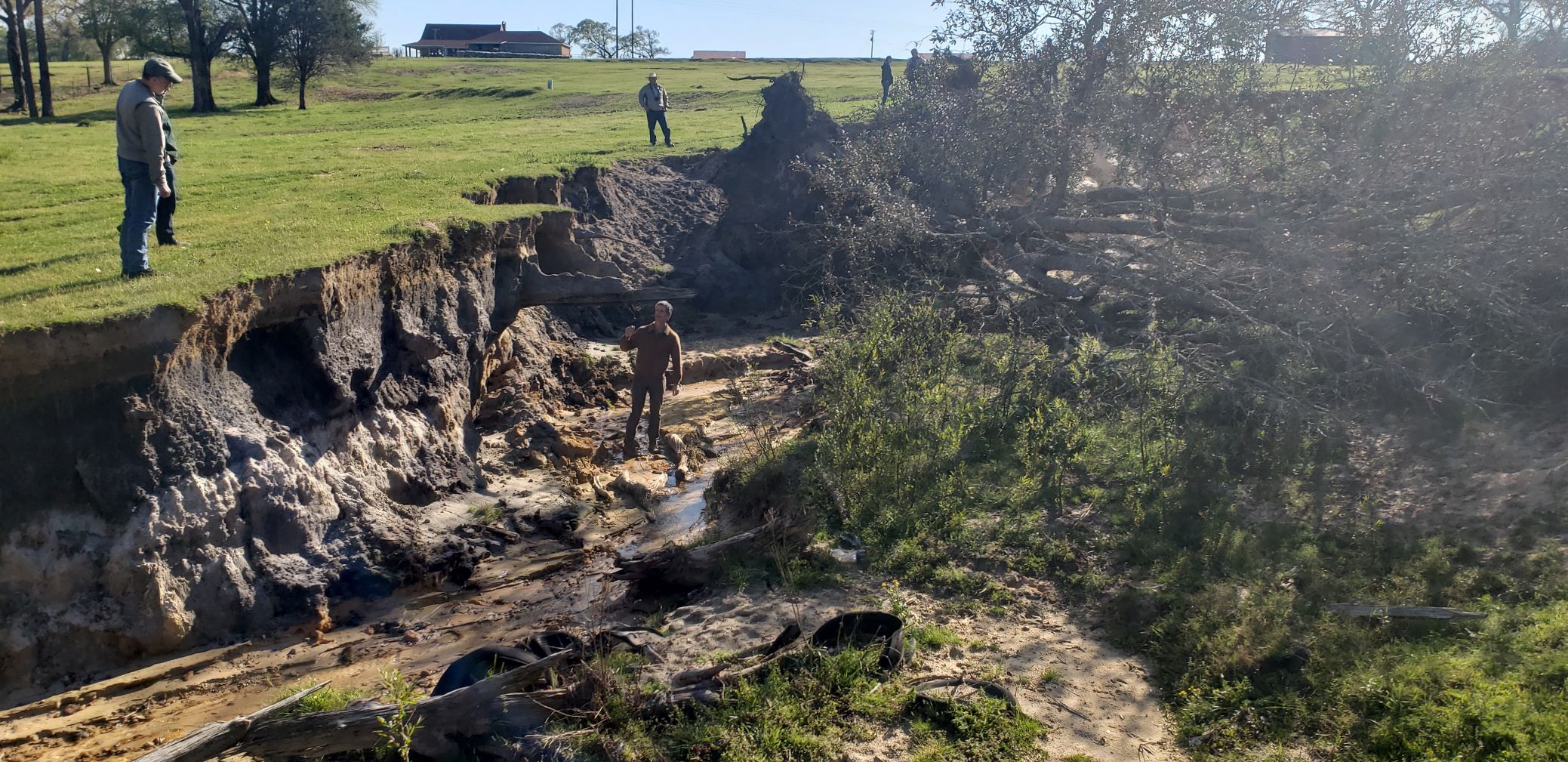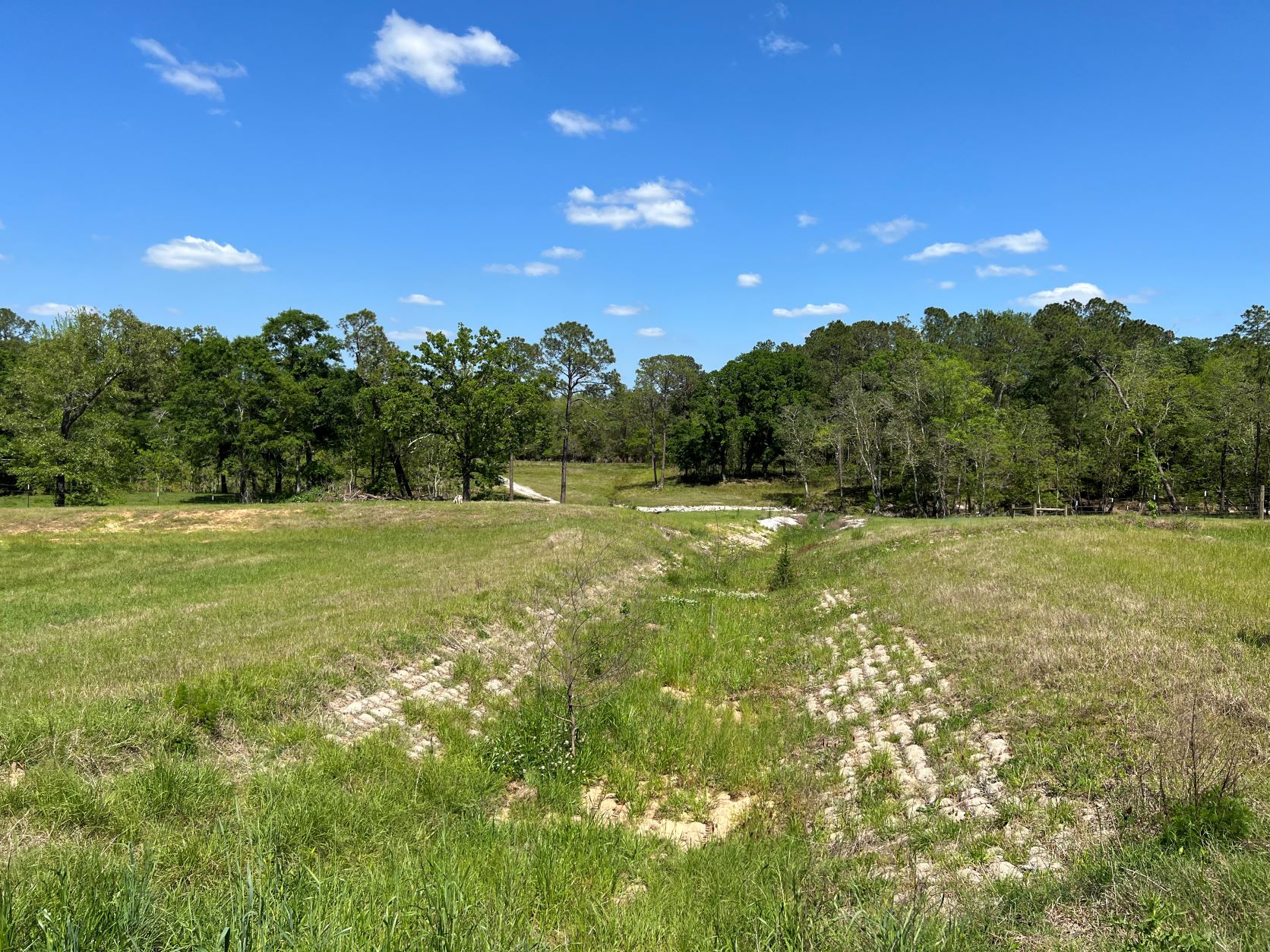
Photo Caption: Prior to USDA implementing the Gulf Coast Conservation Reserve Program at the former Philips tract, a family owned cow/calf operation, there was significant rill and gully erosion, this is an example of a gully with a depth of more than 12 feet.
Photo Caption: As of April 2022, the gully has been treated with a permanent erosion control blanket to prevent soil erosion.
Leaders from the United States Department of Agriculture (USDA) and the RESTORE Council visited the King’s Way Land & Cattle to highlight the impressive results achieved through the Gulf Coast Conservation Reserve Program. Through this RESTORE Council funded program, USDA and its conservation partners work with landowners in Baldwin and Mobile Counties to implement conservation practices to restore wildlife habitat and improve water quality. Today’s visit is part of a tour of RESTORE Council funded restoration projects across the Gulf Coast as the Council prepares to update its Comprehensive Plan for Restoring the Gulf Coast’s Ecosystem and Economy. A draft of the plan was released for public comment on April 21, 2022.
The Gulf Coast Conservation Reserve Program, funded by a 2018 RESTORE Council award of $6.0 Million ($1.5 designated for Alabama), restores critical habitat and improves water quality through the implementation of conservation practices to address soil erosion, nutrient runoff, and wildlife habitat degradation. Through this program, the USDA collaborates with private landowners to develop site specific conservation plans to be implemented on agricultural and forested lands in Baldwin and Mobile Counties. This program will reduce the runoff of sediments and nutrients from agricultural operations and associated forested lands that drain to the Mobile Bay, Mississippi Sound, Bon Secour Bay, and Perdido Bay. This award began in 2018 and its anticipated duration is eight years.
“The former Philips tract is a perfect example of a successful collaboration between the public and the government to address natural resource concerns at the watershed level to make a positive environmental impact to coastal watersheds,” said Ronald Howard, Acting Director of the USDA- Gulf Coast Ecosystem Restoration Team. “The family owned cow/calf operation was experiencing significant rill and gully erosion – including gullies with depths of more than 12 feet. But for the technical and financial assistance provided by USDA-Natural Resources Conservation Service through the GCCRP, the soil and nutrient runoff from the gullies would still be entering the local streams and tributaries.”
Agricultural and forested lands are an important part of the Gulf ecosystem – serving as a natural filter for the coastal watersheds. By implementing conservation practices on agricultural and forested lands that are vulnerable to soil erosion, the water quality of nearby streams and tributaries that (eventually) flow into the Gulf are improved.
This visit comes as the RESTORE Council has released its Draft Comprehensive Plan Update for public review and comment. The RESTORE Act, passed in the wake of the Deepwater Horizon oil spill, calls for the RESTORE Council to develop a comprehensive plan for use of a portion of the Deepwater Horizon settlement funds to restore the ecosystem and economies of the Gulf Coast. This plan communicates the Council’s goals and objectives for restoration, and it guides future investments in restoration activities. Gulf Coast stakeholders are invited to review and comment on the draft plan update during a formal comment period, beginning April 21, 2022. The deadline for submitting public comment is 11:59 MT on June 6, 2022.

